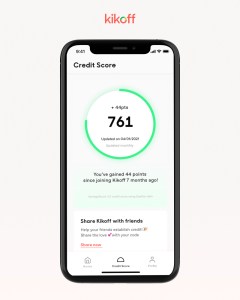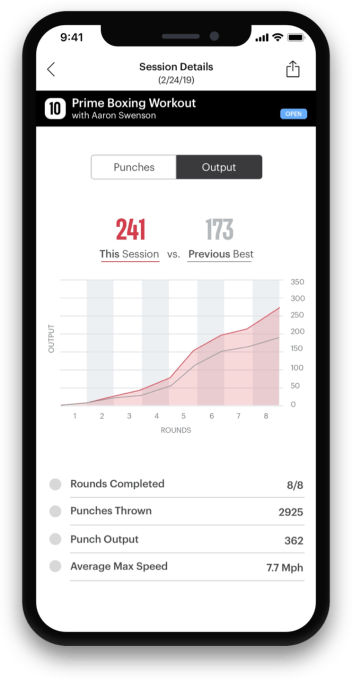“Instant” grocery delivery has been a big theme among food startups in Europe, where customers can order from a limited assortment of items and get their purchases packed from “dark stores” and delivered in sometimes as little as 10 or 15 minutes. But today a startup that’s built a much bigger proposition — a virtual supermarket of 17,000+ items that it delivers in as little as two hours — is announcing some funding as it expands in Europe.
Rohlik, a Czech startup that has built an online grocery ordering and delivery business selling grocery fare — which it procures itself wholesale, or in partnership with established businesses, combining that with items sourced from local small businesses — has picked up €100 million ($119 million at today’s rates). This Series C investment values Rohlik at €1 billion ($1.2 billion).
The round is being led by Index Ventures, which was also part of Rohlik’s $230 million Series B that it raised only three months ago. Previous backers including Partech and Quadrille Capital also participated in this latest round.
The reason for the rapid fundraise is to strike while the iron is hot and put the gas on expansion, said Tomáš Čupr, Rohlik’s founder and CEO.
In the last three months, the Czech startup has expanded to Hungary and Austria and is planning its first launch in Germany, in Munich, in the coming months. With this extra funding boost, he said that Romania, Italy, France and Spain now on the list as well.
“They were all in the first plan we wanted to present to investors, but we felt we were unproven coming from Eastern Europe,” Čupr said in an interview. “Now we feel like we can unleash what we saw before, which is that with the high penetration of mobile shopping, we have a chance to disrupt groceries in Europe.”
The Covid-19 pandemic has had a giant impact on how we eat — and one aspect of that has been that many more people started to buy food — ready-made, groceries, and everything in between — online and get it delivered to their homes rather than picking it and paying in person. As established online and offline services buckled under the weight of customer demand, that represented a big opportunity for tech companies building more efficient models to get people the same goods (and sometimes even a more interesting selection, or a more convenient service) to fill the gap.
Rohlik was actually around and growing steadily for six years in its home market of the Czech Republic before raising money — and it’s actually already profitable there — but its star really started to rise with that bigger shift in consumer demand.
Rohlik’s revenues in 2020 passed €300 million, with over 750,000 customers; it’s not yet disclosing any figures for 2021 that would speak to how well its expansion is going, but the funding seems to point to traction. Currently, the average shop is in the range of €60 to €100 per order, with customers typically shopping about once per week, Čupr said.
While Rohlik’s name may change with each new market — in Hungary it’s Kifli.hu, in Austria its Gurkerl.at, and in Germany it will be called Knuspr.de — what is staying consistent is the company’s basic formula, a mix of its own-purchased-in wholesale items, goods from partners like Marks & Spencer, and products sourced from smaller and local businesses, a mix that might be rebalanced or personalized depending on market demand, and potentially pushed out for some interesting economies of scale using Rohlik’s logistics operations to do so.
This is an interesting point. As someone who has lived both in countries like the U.S. where small food businesses like fishmongers are essentially nonexistent, except for in the biggest of metropolises; and in places in Europe, where it’s not uncommon for even the smallest villages to have independent, well-used shops for basics, this is where Rohlik stands out for me, as a rare example of a tech company that is trying to bring more growth to those small businesses rather than providing a service that eventually puts them out of business.
Čupr described a “failing in the online grocery business in the last few years,” where the offerings were essentially just what you got in a basic large supermarket. Rohlik is changing that up by incorporating smaller businesses. His example: a pasta-making shop in Italy might now be able to, for the first, time, also sell its ravioli and pappardelle to a buyer in Austria or Hungary through Rohlik.
“This has absolutely been the playbook. You will see the same pattern with our assortment,” he said. “Local butchers, bakers, fishmongers and pharmacies, but also M&S clothes, kitchenware. It’s basically our ‘near food’ approach.
“It’s not just a journey to a cornershop that we are trying to cut out,” he continued, in reference to the profusion of fast-delivery startups that have all hit the market. Instead, he referred to another major European shopping practice of saving it all for the weekend. “We want to save your Saturday in a few clicks.”
And given that there are still countries, like France, where online groceries have been quite slow to take off, that speaks of a lot of growth potential. All of this likely resonates strongly with European investors who would likely know those routines as part of their own cultures.
“It’s a combination of three things that got validated here,” said Jan Hammer, a partner at Index who led this deal. “First, it’s the incredible market opportunity, and we’re only scratching the service. Then, it’s Rohlik’s formula and business model, a unique combination, and customers love it.”
Whether consumer habits are shifted for good will be something to watch, as will how others in the market respond, particularly more localized players that have carved out their own leadership over years, and in cases where they may have brick-and-mortar as well, generations. That loyalty to traditional businesses is ultimately what Rohlik champions, but also what might most challenge it.
from TechCrunch https://ift.tt/3dyfxUh
via IFTTT



